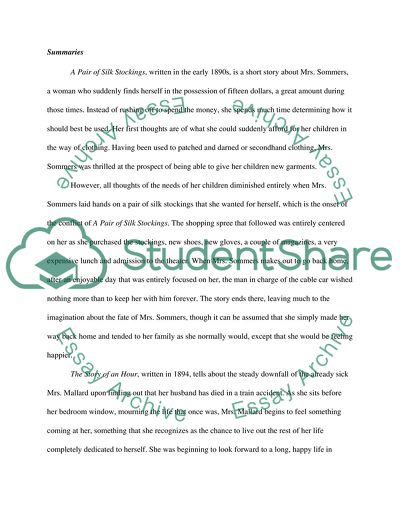Cite this document
(Kate Chopin: The Independence and Downfalls of Women Research Paper, n.d.)
Kate Chopin: The Independence and Downfalls of Women Research Paper. Retrieved from https://studentshare.org/literature/1745587-comparingcontrasting-kate-chopin-a-pair-of-silk-stockings-and-the-story-of-an-hour
Kate Chopin: The Independence and Downfalls of Women Research Paper. Retrieved from https://studentshare.org/literature/1745587-comparingcontrasting-kate-chopin-a-pair-of-silk-stockings-and-the-story-of-an-hour
(Kate Chopin: The Independence and Downfalls of Women Research Paper)
Kate Chopin: The Independence and Downfalls of Women Research Paper. https://studentshare.org/literature/1745587-comparingcontrasting-kate-chopin-a-pair-of-silk-stockings-and-the-story-of-an-hour.
Kate Chopin: The Independence and Downfalls of Women Research Paper. https://studentshare.org/literature/1745587-comparingcontrasting-kate-chopin-a-pair-of-silk-stockings-and-the-story-of-an-hour.
“Kate Chopin: The Independence and Downfalls of Women Research Paper”, n.d. https://studentshare.org/literature/1745587-comparingcontrasting-kate-chopin-a-pair-of-silk-stockings-and-the-story-of-an-hour.


